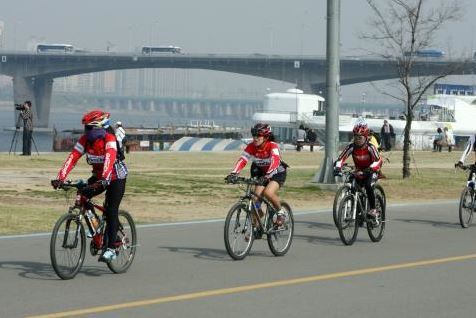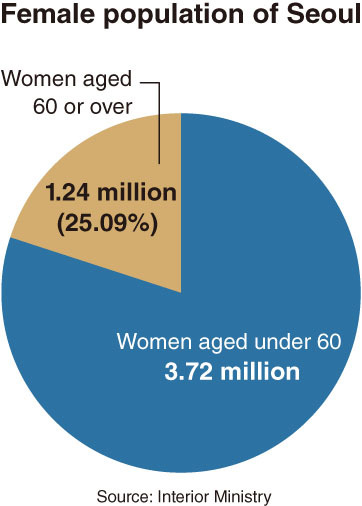[News Focus] 1 in 4 female Seoulites aged 60 or over
5,000 female centenarians reside in capital
By Kim Yon-sePublished : Jan. 17, 2021 - 17:46

SEJONG -- The number of people aged 100 or over in South Korea reached a historic high of 21,912 last year, data from the Ministry of Interior and Safety showed.
In particular, 75.5 percent of centenarians were women, with the age group comprising 16,561 women vs. 5,351 men.
Of all female centenarians, 5,001 or 30.1 percent resided in Seoul. Compared with 2010, when the tally of female centenarians residing in the capital was 2,549, the number has seen a 96.1 percent increase. The figure stood at 359 at the end of 2008.
In addition, 11.8 percent (589,878) of all 4.9 million female residents of Seoul were aged 70 or over, and 25 percent (1.24 million) were aged 60 or over.
A demographic researcher said that “1 in 4 women in Seoul are aged in their 60s or over. This is signaling that Korea is heading toward a superaged society via the current aged society.”

Female Seoulites posted an average age of 44 as of December 2020, while the average age of men in the capital was 42.3.
In female centenarian populations, Gyeonggi Province ranked second with 3,158, followed by Busan with 1,467, North Gyeongsang Province with 781, South Jeolla Province with 748, South Chungcheong Province with 717 and Incheon with 710.
Sejong -- despite having a population under 400,000 -- had 40 female centenarians, though the tally was the smallest among the 17 major cities and provinces.
When it came to the average age of its female residents, South Jeolla Province topped the list with 48.7. This reflects the fact that young people born in the area have actively moved to metropolitan areas, including Seoul, and many of the province’s women have become widows since women tend to live longer than men.
The average age for women stood at 48.1 in North Gyeongsang Province, 47.4 in Gangwon Province, 47.2 in North Jeolla Province, 46.3 in Busan and 45.6 in South Chungcheong Province.
Korean women were older by five years than a decade earlier, Interior Ministry data showed -- 44.3 in December 2020 vs. 39.3 in December 2010.
According to the Organization for Economic Cooperation and Development, among the 37 OECD members Korea ranked third in terms of life expectancy at birth for girls, which stood at 85.7 years.
Meanwhile, women began to outnumber men in June 2015, when the sex ratio -- the number of men per 100 women -- fell to 99.9. That was the first time in history it had dropped below 100 since the government began compiling relevant data. In that month, there were 400 fewer male Koreans than female Koreans.
As of December 2020, women outnumbered men by 146,925 and the sex ratio posted an all-time low of 99.43.
Among the nation’s 17 major areas, Seoul posted the lowest ratio of males to females, 94.6 per 100 women or 4.7 million to 4.96 million. Women in the capital have tended to outnumber men for more than a decade.
The sex ratio in Seoul’s population slid by 0.5 percentage point from 95.1 in December 2019, and by 2.2 percentage points from 96.8 in December 2015.
Busan was not far behind with a sex ratio of 95.9, followed by Daegu at 97.3. Gwangju ranked fourth-lowest with 97.9, followed by North Jeolla Province at 98.8, Daejeon at 99.6 and Sejong at 99.6.
By Kim Yon-se (kys@heraldcorp.com)











![[Today’s K-pop] BTS pop-up event to come to Seoul](http://res.heraldm.com/phpwas/restmb_idxmake.php?idx=644&simg=/content/image/2024/04/17/20240417050734_0.jpg&u=)




![[KH Explains] Hyundai's full hybrid edge to pay off amid slow transition to pure EVs](http://res.heraldm.com/phpwas/restmb_idxmake.php?idx=652&simg=/content/image/2024/04/18/20240418050645_0.jpg&u=20240418181020)

![[Today’s K-pop] Zico drops snippet of collaboration with Jennie](http://res.heraldm.com/phpwas/restmb_idxmake.php?idx=642&simg=/content/image/2024/04/18/20240418050702_0.jpg&u=)